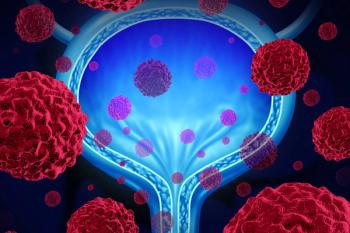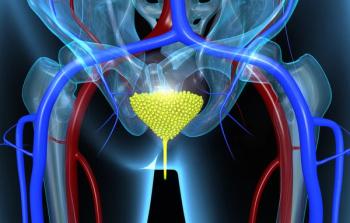
FGFR Inhibitor Shows Promise in Advanced Urothelial Carcinoma
A phase II study found that the FGFR inhibitor erdafitinib yields a good response rate and was well tolerated in patients with urothelial carcinoma and FGFR alterations.
A phase II study found that the FGFR inhibitor erdafitinib yields a good response rate and was well tolerated in patients with metastatic or unresectable urothelial carcinoma and FGFR alterations.
“Patients with advanced urothelial carcinoma typically have had very poor clinical outcomes,” said Arlene O. Siefker-Radtke, MD, of the University of Texas MD Anderson Cancer Center in Houston. “The recent development of immunotherapy has yielded much excitement in the field, with improved clinical outcomes. But with an objective response rate of 20% and a median overall survival of approximately 10 months, it has become clear that not all patients benefit from this therapy.”
Approximately 15% to 20% of metastatic urothelial carcinoma patients have FGFR alterations. Erdafitinib has shown promising activity in other early-phase studies. Siefker-Radtke presented results of the phase II study that included 99 patients with surgically unresectable or metastatic urothelial carcinoma at the 2018 American Society of Clinical Oncology (ASCO) Annual Meeting, held in Chicago (abstract
The median age of the patients in the study was 68 years; most patients (88%) had progressed or relapsed after chemotherapy, while 12% were chemotherapy-naive; 22% of patients had received prior immunotherapy. Approximately 43% of patients had received 2 (29%) or 3 or more (14%) lines of prior therapy. Most FGFR alterations were FGFR3 mutations (75%), with fewer FGFR2 or FGFR3 fusions (25%). Patients received an erdafitinib dose of 8 mg/day up-titrated to 9 mg/day based on target serum phosphate levels and absence of significant treatment-related adverse events.
The objective response rate in the trial was 40.4%; there were 3 complete responses (3.0%), and 37 partial responses (37.4%). Another 39.4% of the cohort had stable disease, while 18.2% had progressive disease. The median time to response was 1.4 months, and the median response duration was 5.6 months. The response rate was similar among chemo-naive and chemo-treated patients; it was 38.5% in those with visceral metastases, compared with 47.6% in those without.
Twenty-one percent of the patients remained on study treatment after 11 months of follow-up. The median progression-free survival was 5.5 months, and the median overall survival was 13.8 months.
In an exploratory analysis, the authors looked at 22 patients who had been treated with prior immunotherapy; only 1 of those 22 (5%) had achieved a response to that immunotherapy. Among those 22 patients, the response rate to erdafitinib was 59%.
Most adverse events to the study drug were grade 1 or 2; hyperphosphatemia (any grade, 73%), stomatitis (55%), and dry mouth (43%) were the most common such events. The most common grade 3 adverse events included stomatitis (9%), hand-foot syndrome (5%), and diarrhea (4%). There were no grade 4 or 5 events.
“This clinical trial with erdafitinib met its primary endpoint with a confirmed objective response rate,” Siefker-Radtke said, adding that it had a good safety profile. Based on these results, the agent was granted Breakthrough Therapy Designation by the US Food and Drug Administration earlier this year, and a phase III trial is now ongoing comparing erdafitinib with chemotherapy or pembrolizumab.
Andrea B. Apolo, MD, of the National Cancer Institute in Bethesda, Maryland, was the discussant for the session. She called the results “impressive,” and noted that combinations are likely to be an important approach in the future. “Drug resistance with single-agent targeted therapy is inevitable,” she said. “Preclinical models have demonstrated synergy between FGFR and PI3K inhibitors…and combining FGFR and EGFR inhibition has shown synergy [as well].”
Newsletter
Stay up to date on recent advances in the multidisciplinary approach to cancer.

















































































